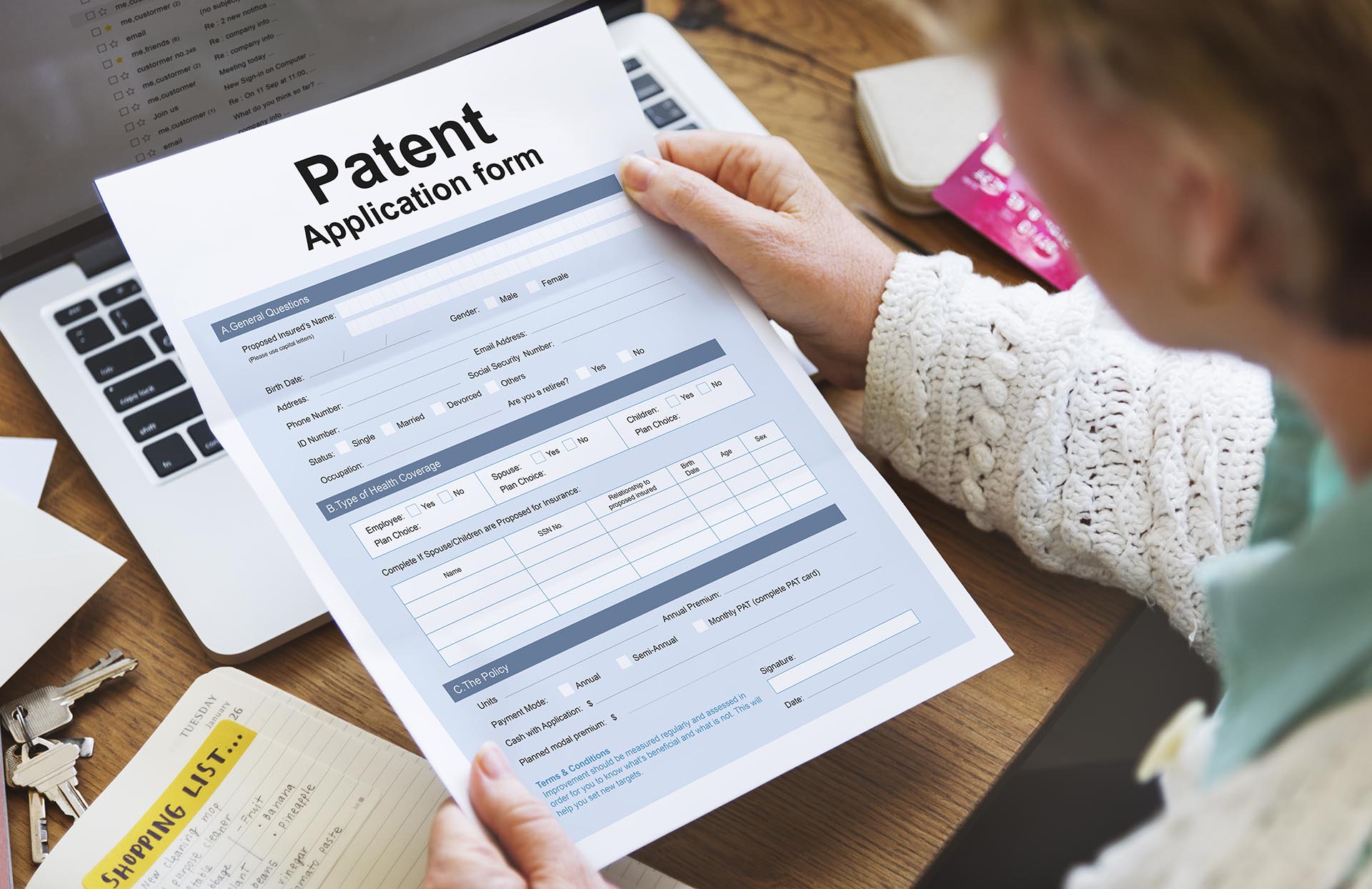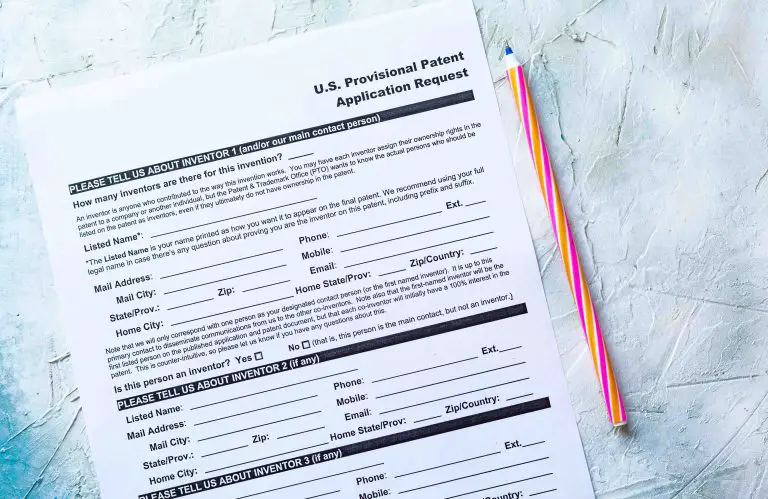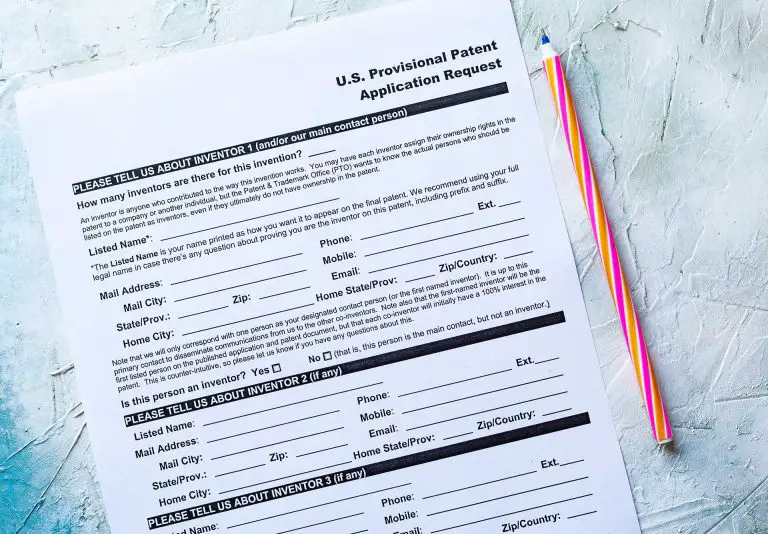Provisional vs Nonprovisional Patent (What is the Difference)
If you have an invention that you want to patent, you may be wondering whether you should protect it using a provisional patent or a nonprovisional patent. While there is no such thing as a provisional patent, you can certainly file what is known as a provisional patent application. Also, inventors have the option of filing what is known as a nonprovisional utility patent application. We will explain the difference between a provisional patent application and a nonprovisional patent application in the section below.
Provisional vs Nonprovisional Patent
A provisional patent application is a type of patent application that reserves an early filing date for an invention but does not turn into a patent. A nonprovisional utility patent application is a regular patent application that does turn into a granted patent.
So, why is there even a provisional patent application?
First to File Rule
A provisional patent application is available because it’s a cheap and effective way to obtain an early filing date for your invention if it is drafted properly. Obtaining an early priority date is important in the United States because the U.S is a first to file county that awards a patent to the first person to file a patent application (provisional or nonprovisional) with the patent office.
Filing a patent application as quickly as possible is important in the U.S because if you were the first person to invent an invention and someone else invents the same invention after you but files his patent application before you do, he will be awarded the patent and you will not be able to patent the same invention even though you invented it first.
For this reason, we have provisional patent applications. Provisional applications require much less information and are quite cheap to file when compared to regular, nonprovisional patent applications. This makes provisional patent applications a great tool to obtain an early filing date for your invention, especially if you’re still working on it or you need some time to get investors to invest in your invention.
Patent Pending
After filing either a provisional patent application or a nonprovisional patent application, you will be able to mark your invention or product with the words patent pending. You will also be able to market your invention as patent-pending and adding the words patent pending to the product materials and/or product materials.
Note: If you do choose to file a provisional patent application instead of a nonprovisional patent application, you need to file a nonprovisional patent application within 12 months of filing your provisional application. If you do not file a nonprovisional utility patent application within the 12 month period, your application is abandoned and you will lose your early filing date.
Preparation & Filing
Preparing a provisional patent application is easier than preparing a nonprovisional patent application because provisional applications do not need to follow many of the formalities of a regular patent application. Also, provisional applications do not require formal patent claims, so provisional applications are not examined, they are only placeholders in time.
Since provisional patent applications don’t turn into a granted patent unless a (regular) nonprovisional utility patent application is filed, preparing a provisional application that you can use as your early filing date is very important.
For you to benefit from the early filing date of an earlier-filed provisional application, the invention described in your nonprovisional patent application must be the same invention that you described in your provisional application.
The patent examiner will look at your provisional application and compare its description with the one in your nonprovisional application. If the patent examiner determines that the invention described in your provisional application is different, you will not be able to benefit from the earlier filing date.
When does this become a problem?
This becomes a problem if someone else files a patent application for the same invention after you’ve filed your provisional patent application. If the patent office does not allow you to benefit from your earlier filing date, the other patent application for the same invention will have priority over your invention.
Therefore, it’s very important to take the time to properly describe your invention in the provisional patent application.
Many inventors view a provisional patent application as a cheap alternative that they don’t have to put too much effort preparing, but the truth is that a provisional patent is very important and inventors should take the time to properly describe how to make their invention, as well as how to use it.
Hiring an Attorney or Patent Agent
It’s best to hire an attorney to draft your provisional patent application for you. Making even seemingly minor mistakes could cause trouble down the road when it comes time to file a regular patent application.
If you don’t have the funds to hire an attorney, you should consider the option of hiring a patent agent to prepare your provisional application for you. Patent agents are licensed by the patent office to assist inventors with preparing a provisional patent application and filing them with the patent office. Patent agents tend to charge less than patent attorneys.
Can You Make Changes to Your Provisional Patent Application?
Unfortunately, once you filed a provisional patent application you’re stuck with the invention that you described in your provisional patent application.
If you’ve changed your invention from the time you filed your provisional application, the patent office may not allow you to benefit from the earlier filing date for the changes that you made to your invention.
As such, it’s very important for you to take the time to adequately take your time to describe the invention you want to protect so that when the time comes to file your nonprovisional patent application, the invention you describe in your nonprovisional patent application will relate back to your provisional application and benefit from the earlier filing date.
Although drawings of your invention are not required for provisional patent applications, if they will help the patent examiner understand how your invention works, you should include them. Invention drawings will fill in the gaps left by the written description of your invention.
How Long Does it Take for a Provisional Patent to be Approved?
A provisional patent is not examined by the patent office and therefore it cannot be approved. Provisional patent applications are simply placeholders in time that hold a spot for your invention at the patent office.
As mentioned previously, a provisional patent application only lasts for 12 months. During the 12 month grace period, an inventor must either convert his provisional application into a nonprovisional application (rarely done) or an applicant must file a nonprovisional patent application that relates back to and claims the early filing date of an earlier-filed provisional patent application (commonly done).
If a provisional patent applicant does not file a nonprovisional patent application within the 12 month grace period, his provisional application will be abandoned and the early filing date lost.
Should You File a Provisional Patent Application?
If you have an invention that you’re still working the kinks out of or you want to find investors to invest in your invention, you can file a provisional patent application to hold a spot in line for your invention.
Remember that the United States is a first to file country that awards the patent to the first inventor to file an not the first to invent. As such, obtaining a spot in line for your invention is necessary if you want to patent it.
Provisional patent applications are the quickest way to save that spot because they don’t have to comply with many of the formalities of a regular nonprovisional patent application.
You often hear that provisional patents are cheaper and they do tend to cost less to prepare than nonprovisional patent applications, but it’s imperative that you do not rush the preparation of your provisional application if you want to patent your invention later down the road.
Can a Provisional Patent Application Be Rejected?
A provisional patent application cannot be rejected because the patent office does not examine provisional applications. Provisional applications are only placeholders in time.
The patent office will look at your provisional patent application only if you choose to file a nonprovisional patent application within the 12 month grace period. If you file a nonprovisional patent application, the patent examiner at the patent office will look at your provisional application to determine whether the invention described in both applications match to allow the applicant to benefit from the early filing date.
Can You File a Provisional Patent Application Online?
Yes, you can file a provisional patent application online. The USPTO website allows you to add the required information about the inventor and the invention. They also allow you to upload the required documents and drawings. The patent office allows you to pay the required provisional patent application filing fees online.
Here is a great informative guide on how to file a provisional patent application online.
Just remember that if you’re serious about patenting your invention, you should take the time to thoroughly prepare your provisional patent application to avoid trouble patenting your invention down the road. If preparing a strong provisional patent application means hiring an experienced patent attorney, then, by all means, hire an experienced patent attorney and have the job done properly.
Can You Extend Your Provisional Patent?
No, a provisional patent application cannot be extended beyond the 12 month grace period. If you want to keep your patent-pending status, you have two options. The first option is to file a nonprovisional patent application to continue patenting your invention or you can file another provisional patent application and that would restart the 12-month clock but you will lose your early filing date for the invention. If you want to know your options because contact your attorney and ask them what you should do. Every situation is different and your attorney will be able to offer you valuable advice.
Nonprovisional Patent Application vs Provisional Patent Application
A nonprovisional patent application is a full-fledged regular utility patent application that inventors file to patent their invention. A nonprovisional patent application can turn into a granted patent.
Inventors also have the option of filing a provisional patent application, which doesn’t require formal claims and the formal requirements of a regular patent application, but a provisional application does not turn into a patent. If an inventor chooses to file a provisional application first, he has 12 months to file a regular, nonprovisional patent application to patent his invention.
We also covered topics, such as who a provisional patent application is right for, whether a provisional application can be rejected, and how long it takes to get a provisional patent.
If you have any general questions or comments, please feel free to leave them in the comments section below.







